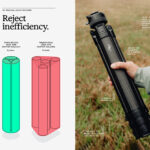Learning the basics of photography is the first step toward creating stunning shots. I consider them to be the building blocks of this profession, and knowing how to combine them can lead to masterpieces. The following video from B and H addresses one of the basic elements of photography, ISO:
What is ISO?
The ISO setting determines how sensitive your camera’s sensor is to light.
How do ISO Settings Work?
The lower the ISO setting, the brighter the setting it is adapted to. For example, if you’re shooting outside on a sunny day, a ISO 100 setting will suffice, while if you’re shooting indoors with low light, ISO 3200 is not unusual. The video uses some very handy examples, showing the sensitivities you need to use when shooting outdoors in the sun and in the shade, indoors, and so on.

How sensors of different size render the same ISO settings
Standard ISO Increments
Most cameras start at ISO 100 (least sensitive). From there, you double the preceding value to get standard increments: ISO 100, 200, 400, 800, 1600, 3200, and so on. Some cameras also use partial increments. Modern cameras that are designed to work especially well in the dark go even higher than ISO 100,000.
The downside to having high ISO settings is that the higher the ISO setting is, the more noise there will be in the picture. If your sensor is larger, you can shoot higher at ISO settings without this graininess becoming obvious.
How do you work with ISO in your pictures? Do you set it to auto, or do you change it on a picture-by-picture basis?
Like This Article?
Don't Miss The Next One!
Join over 100,000 photographers of all experience levels who receive our free photography tips and articles to stay current:







Leave a Reply